iPhone Air vs iPhone 17 Pro Max: Style versus power
The feather-weight iPhone Air faces the heavy-weight champion - the iPhone 17 Pro Max.
We may earn a commission if you make a purchase from the links on this page.

The iPhone 17 series is now a good couple of weeks into its market debut. This year decided to hop on the slim phone train with the brand-new iPhone Air, following in the footsteps of the Galaxy S25 Edge.
Now, after initial sales figures are in, and Apple reportedly is scaling back the production of the Air, it seems that people aren't that keen on the ultra-thin phone trend. But nevertheless, another interesting question remains unanswered.
Explore more phone deals this Black Friday right here
How does this new thin and innovative phone stack up against the conventional heavyweight champion—the iPhone 17 Pro Max? The Pro Max comes with a lot of upgrades; compared to the Air, it features two mode cameras, a bigger battery, and dual speakers, but, of course, a more premium price tag as well.
iPhone Air vs iPhone 17 Pro Max differences:
| iPhone Air | iPhone 17 Pro Max |
|---|---|
| Design | |
| Feather weight at just 165 grams | Much heavier at 233 grams |
| Extremely thin at 5.6 mm | Much thicker at 8.8 mm |
| Single-tone back with titanium frame | Dual-tone back, unibody aluminum |
| Ceramic shield front and back | Same, ceramic shield front and back |
| Display | |
| 6.5-inch OLED screen | Bigger 6.9-inch OLED screen |
| 3,000 nits peak brightness | 3,000 nits peak brightness |
| 1 nit minimum brightness | Same 1 nit min brightness |
| Performance | |
| A19 Pro chip | A19 Pro chip |
| 5-core GPU | 6-core GPU |
| - | Vapor chamber cooling |
| 12 GB RAM | Same 12 GB RAM |
| Cameras | |
| Single rear camera | Triple rear cameras |
| 48MP wide | Same 48MP wide |
| - | 48MP ultrawide |
| - | 4X telephoto camera with 48MP sensor |
| 18MP Center Stage front camera | Same 18MP front cam |
| Dual Capture video | Also supports Dual Capture video |
| - | ProRAW + ProRES |
| 4K60 | 4K120 |
| Battery | |
| 3,149 mAh | 5,088 mAh |
| Up to 27 h video playback (22 h streamed) | Up to 39 h video playback (35 h streamed) |
| Wired charging: 50% in ~30 min (20W adapter) | Faster wired charging: 50% in 20 min (40W adapter) |
| 20W MagSafe | 25W MagSafe |
| Models | |
| $1,000 (256 GB base) | $1,200 (256GB base) |
| 1 TB max storage | 2 TB max storage |
| Other | |
| Wi-Fi 7, Bluetooth 6 | Wi-Fi 7, Bluetooth 6 |
| USB 2 port | Faster USB 3.2 port |
| Regular Mics + Audio Mix | 4 Studio Quality Mics + Audio Mix |
Table of Contents:
Read more:
Design and Size
Style vs power
Apple made a big design change with the iPhone 17 series, but there's more. Now we have the slim arms race going at full blast. The iPhone Air employs the new camera bump design, but given it houses only one camera, the overall look is not as radical as with the other models in the portfolio. We're talking about a single thin bar across the back, much like a Pixel phone.
The iPhone 17 Pro Max situation is different, as the camera bump houses three big lens rings; hence, it's much wider, giving the phone a pretty unique look. Design is subjective, but the iPhone 17 Pro Max might not be the prettiest iPhone ever made. Apple calls the new camera housing "extended plateau."
The iPhone 17 Pro Max situation is different, as the camera bump houses three big lens rings; hence, it's much wider, giving the phone a pretty unique look. Design is subjective, but the iPhone 17 Pro Max might not be the prettiest iPhone ever made. Apple calls the new camera housing "extended plateau."
| iPhone Air | iPhone 17 Pro Max |
|---|---|
| Thickness 5.6 mm | Thickness 8.8 mm |
| Weight 146 grams | Weight 233 grams |
Now, onto the biggest selling point of the iPhone Air—its thickness. The phone is just 5.6 mm thin and weighs just 165 grams. It's a technological feat, but we have to see what this super-thin design does to durability. According to Apple, it's the toughest iPhone ever made with a titanium unibody and Ceramic Shield 2 on the front AND the back.
The iPhone 17 Pro Max drops the titanium act for an aluminum unibody and the same Ceramic Shield 2 on both sides of the sandwich. The thickness of the phone has grown with the battery size, and now the phone is around 8.8 mm thick.
Let's quickly list the color variations for the iPhone Air versus the iPhone 17 Pro Max.
| iPhone Air colors | iPhone 17 Pro Max colors |
|---|---|
| Sky Blue | Cosmic Orange |
| Light Gold | Deep Blue |
| Cloud White | Silver |
| Space Black | - |
The interesting part is that we have an orange iPhone again (after many years and the iPhone XR), but not a black one, which is kind of bizarre. The iPhone Air is available in four colors, including the more traditional Space Black and Cloud White hues.
There were some concerns about the durability of the new iPhones, as some people are seeing marks and scuffs on the back of some models, so we did some tests, and it's true. As you can see in the images above, the iPhone 17 Pro Max and the iPhone 17 Pro are very easy to dent and scratch. It appears that the soft aluminum used on these models is not as durable, especially compared to the titanium on the iPhone Air.
Display Differences
120Hz ProMotion for everybody!
Apple has brought its non-pro iPhone 17 model to the modern display world with 120 Hz ProMotion (finally!). It is an upgrade long overdue, but rejoice, all new iPhones are buttery smooth; now all models in the range feature dynamic 120 Hz refresh rates.
In terms of screen size, the iPhone Air comes equipped with a 6.5-inch OLED display and impressive peak brightness figures—3,000 nits.
The iPhone 17 Pro Max retains the display size of its predecessor at 6.9 inches. We dug deep and found that the new iPhones use Samsung's M14 display panel material as a building block, which explains the 3,000-nit peak brightness present on the Pro Max as well.
In terms of screen size, the iPhone Air comes equipped with a 6.5-inch OLED display and impressive peak brightness figures—3,000 nits.
| iPhone Air | iPhone 17 Pro Max |
|---|---|
| Size 6.5" 120Hz | Size 6.9" 120Hz |
| Brightness 3000 nits (peak) | Brightness 3000 nits (peak) |
Another piece of info points toward a new technology called LDTEE (Low-dielectric TEE) which aims to bring improved efficiency and durability to the iPhone 17 series, and judging by the things we heard during the presentation, all new iPhones seem to come equipped with it. Let's get to the benchmarks.
Looking at the results above, it's clear to see that Apple went for the same panels on all new iPhones, and the only difference really is the size. Both the iPhone Air and the iPhone 17 Pro Max are very bright (the iPhone Air managed to output 100 nits more at 20% APL), and they are identical when it comes to minimum brightness, color temperature, and color accuracy. The screen quality and brightness are not deciding factors when choosing between these two.
Performance and Software
A-level silicon with a Pro twist
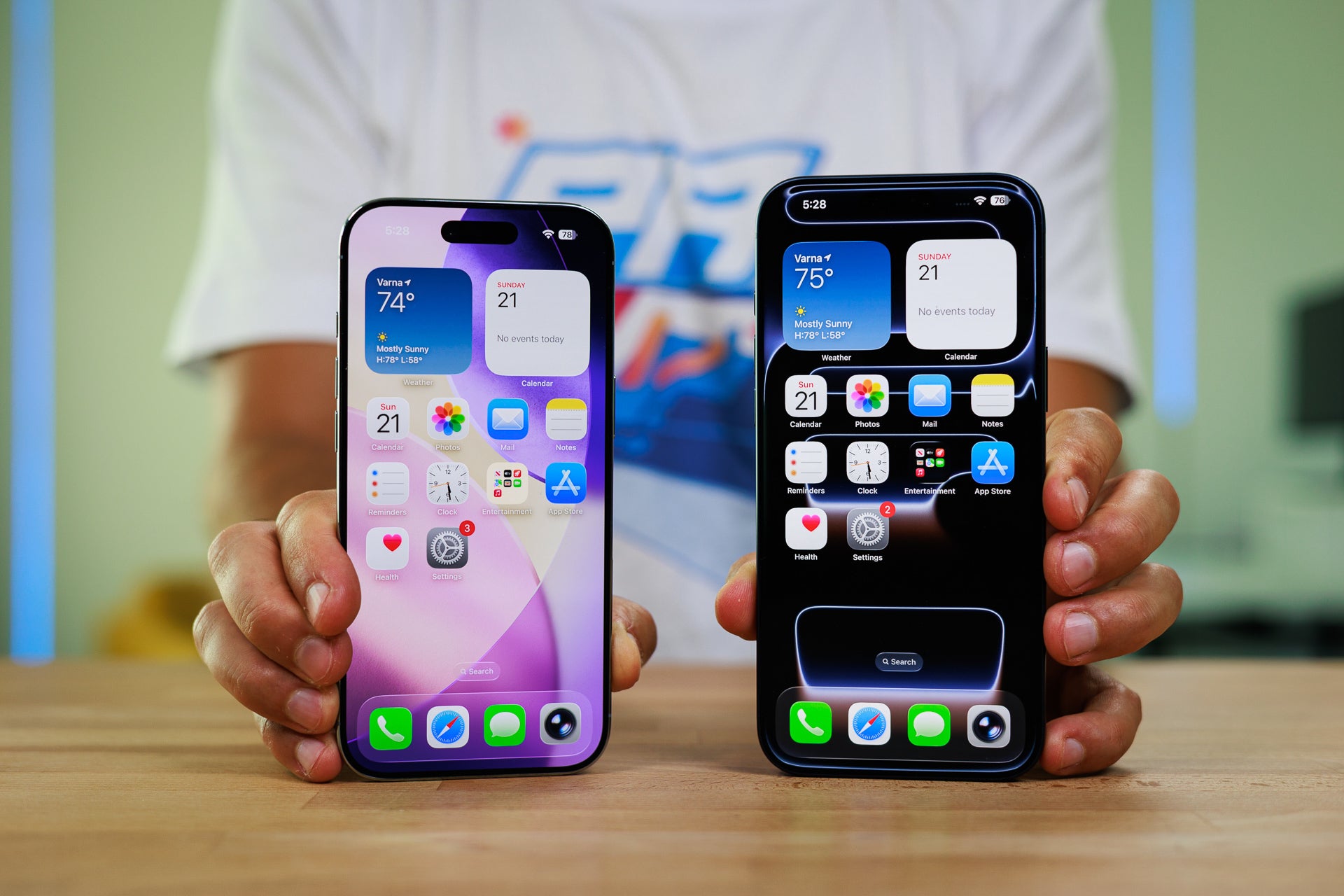
The iPhone 17 series boasts the next-gen A19 silicon. It's the fastest Apple silicon in a phone, which is expected, and Apple cites 40% higher sustained performance compared to the last generation. The good news is that both the iPhone Air and its Pro Max cousin come equipped with the A19 Pro chip. The only difference is that the Air lacks one GPU core and comes with only five, while the Pro Max gets the full stack of six.
| iPhone Air | iPhone 17 Pro Max |
|---|---|
| Chip Apple A19 Pro | Chip Apple A19 Pro |
| Process 3nm | Process 3nm |
| RAM 12GB | RAM 12GB |
There's a new vapor chamber inside the body of the iPhone 17 Pro Max and it should help with cooling and sustained performance. The iPhone Air lacks this novelty purely due to lack of physical space. So, we might see a slight difference in benchmarks and sustained performance. Let's get to the tests.
There is indeed a performance gap despite the similar silicon. The iPhone 17 Pro Max managed to outperform the Air in every test, both CPU and GPU, and while we expected the graphics result (due to the five-core GPU of the Air), the CPU result is a bit surprising.
The lack of a vapor chamber inside the Air probably forced Apple to throttle the performance a little by default. It's also worth mentioning that the Air got really hot during those benchmarks.
The RAM situation is as follows: the iPhone Air has 12GB of RAM on board, just like the iPhone 17 Pro Max - the same 12GB of RAM as the Pro models of last year.
In terms of storage, there's a change—both the iPhone 17 Pro Max and the iPhone Air now start at 256GB base storage. The Pro Max also has a 2TB version for the space-hungry.
The RAM situation is as follows: the iPhone Air has 12GB of RAM on board, just like the iPhone 17 Pro Max - the same 12GB of RAM as the Pro models of last year.
In terms of software, the iPhone Air launches with iOS 26 out of the box, the same goes for the iPhone 17 Pro Max being part of the same lineup. You can check out our early iOS 26 preview for more details.
Camera
One versus three
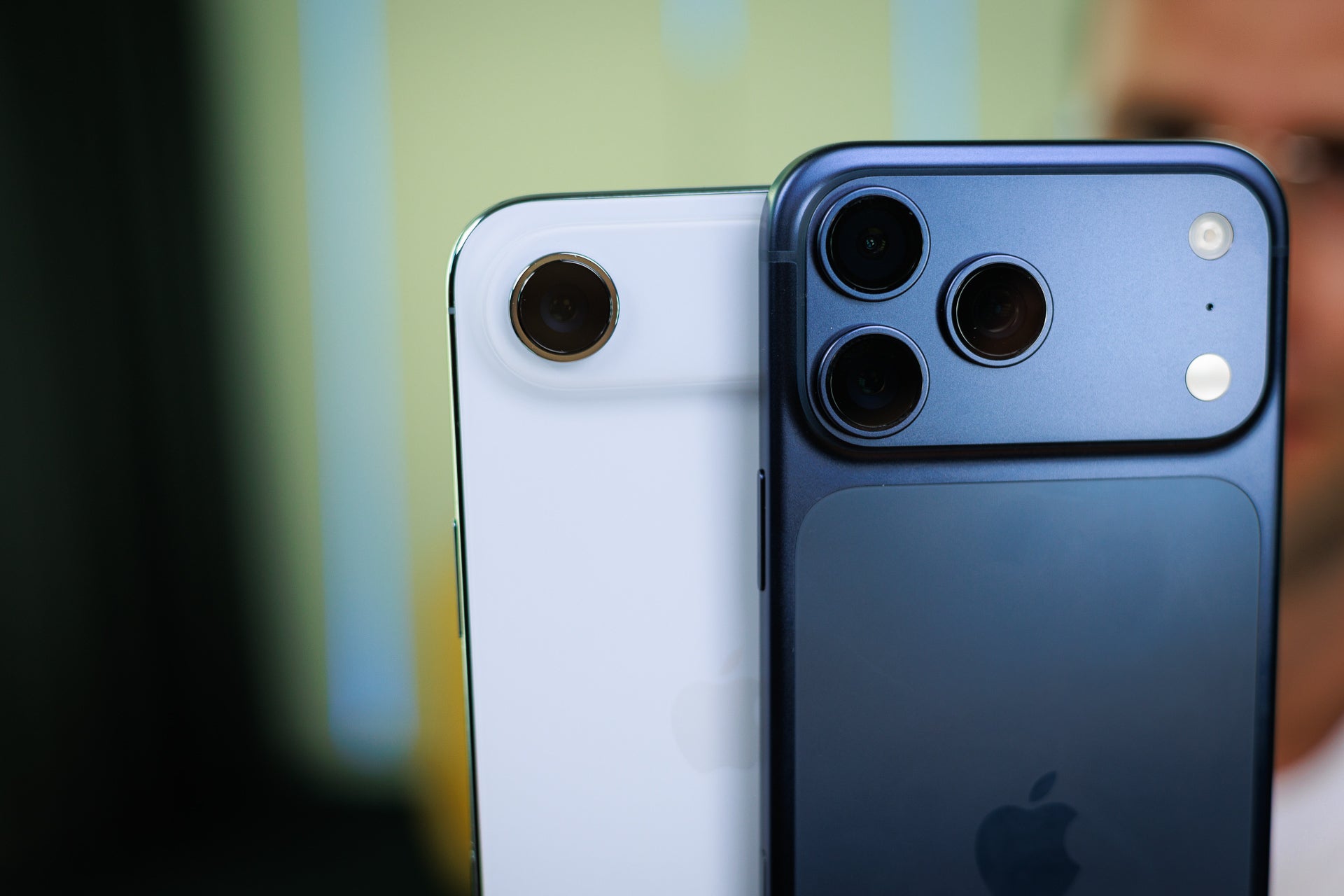
PhoneArena Camera Score:
The iPhone Air features only one camera. And even though Apple wanted us to think that this single camera equals four different lenses, we feel that in comparison to the iPhone 17 Pro Max, the Air is at a disadvantage.
| iPhone Air | iPhone 17 Pro Max |
|---|---|
| Main 48 MP f/1.6 26mm (wide) 1/1.56" | Main 48 MP f/1.6 26mm (wide) 1/1.56" |
| Ultrawide - | Ultrawide 48 MP f/2.2 13mm (ultrawide) 1/2.55" |
| Telephoto - | Telephoto 48 MP f/2.8 4x optical zoom |
The iPhone 17 Pro Max, on the other hand, is the real deal when it comes to cameras. It comes equipped with three 48MP cameras. For the first time in an iPhone, we have three 48MP cameras but we have to snap some real-life photos to judge the upgrade.
There's also a brand-new front camera on all iPhone 17 devices, and it features a unique square sensor that captures 18MP photos in portrait and landscape format without the need to turn the phone.
The Camera Rating in our widget above points toward the iPhone 17 Pro Max as the winner, which is absolutely expected, as it features two additional cameras. Let's check out some real-life samples and compare them side-by-side where we can. There won't be any ultrawide shots, as the Air doesn't have an ultrawide camera, and also the zoom shots are capped at 2X optical-like on the Air.
Main
Zoom
Selfie
Video Quality

Apple is also launching Dual Capture video, which combines footage from both the rear and front cameras. This is not a new or groundbreaking feature in the smartphone industry; it has been available on Android phones for a decade (such as the Xperia Z5 and XZ), but it is still an excellent feature to have.
Battery Life and Charging
No silicon-carbon on the horizon?
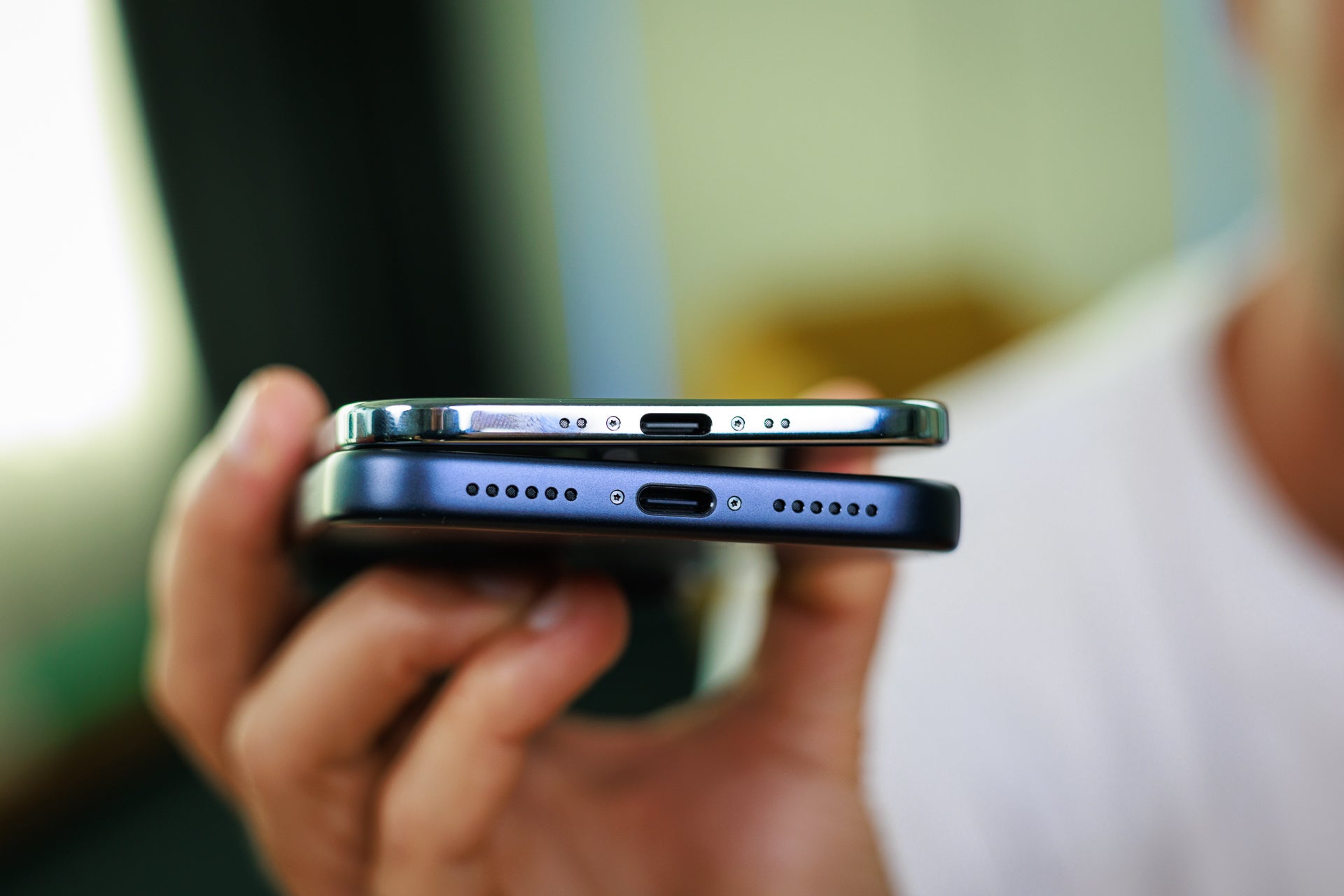
There's no way to beat physics, especially when it comes to batteries. The iPhone Air is just 5.6 mm thick, so there's not much space for a battery inside. We kind of hoped Apple would hop on the silicon-carbon train and offer more capacity, but the conservative approach remains.
No battery capacities were mentioned during the event (which is typical for Apple) but Tim Cook and company said the batteries inside the new iPhones are bigger and they offer more battery life. Of course, teardowns has revealed the exact capacities and now we know that the Air comes equipped with a 3,149 mAh cell, while the Pro Max features a much bigger 4,832 mAh (5,088 in the eSIM only variant).
No battery capacities were mentioned during the event (which is typical for Apple) but Tim Cook and company said the batteries inside the new iPhones are bigger and they offer more battery life. Of course, teardowns has revealed the exact capacities and now we know that the Air comes equipped with a 3,149 mAh cell, while the Pro Max features a much bigger 4,832 mAh (5,088 in the eSIM only variant).
| iPhone Air | iPhone 17 Pro Max |
|---|---|
| Battery capacity 3149 mAh | Battery capacity 4,832 mAh 5,088 (eSIM only) |
Charging speeds 30W MagSafe | Charging speeds 40W wired 30W wireless (MagSafe) |
PhoneArena Battery and Charging Test Results:
The results are kind of expected, the Pro Max outlasts the Air, but there are peculiarities. The Air manages a better battery score in the YouTube test, and we recon it's due to the mono speaker drawing less power during the test. Overall, the battery life of the iPhone Air is not that bad, considering the size of the battery and how tightly packed it is. Oh, and Apple found room to fit wireless charging coils inside this thing. Amazing!
Specs Comparison
Here's a quick specs comparison between the iPhone Air and the iPhone 17 Pro Max:
| iPhone Air | iPhone 17 Pro Max |
|---|---|
| Size, weight 156.2 x 74.7 x 5.6 mm 165 g | Size, weight 163.4 x 78 x 8.8 mm 233 g |
| Screen 6.5" OLED 120Hz ProMotion | Screen 6.9" OLED 120Hz ProMotion |
| Processor Apple A19 Pro 3nm 5 GPU cores | Processor A19 Pro 3nm |
| Versions: 12/256GB 12/512GB LPDDR5 | Versions: 12/256GB 12/512GB 12/1TB 12/2TB LPDDR5 |
| Cameras: 48MP main 18MP front | Cameras: 48MP main 48MP ultra 48MP telephoto 18MP front |
| Battery: 3,149 mAh | Battery: 4,832 mAh 5,088 mAh (eSIM only) |
| Charging: USB-C 30W wired MagSafe | Charging: USB-C 40W wired MagSafe |
Also read:
Summary

These two phones illustrate completely different perspectives on what is important in today's smartphone environment. The iPhone Air aims to dominate the rapidly growing "slim" smartphone category, even though the future of this category remains in shambles, while the iPhone 17 Pro Max is just the best and most powerful iPhone available.
If you opt for the Pro Max, you'll get two more cameras, a bigger battery, and a larger display. The iPhone Air, on the other hand, stands out since it is only 5.6 mm thick, and it's also more durable because it features a titanium frame. Furthermore, this year's Pro versions ditched the exotic material in favor of good old aluminum, and it seems that this has resulted in durability problems.
The iPhone Air costs $999 for the 256GB variant, which is a reasonable price for such a unique phone. The iPhone 17 Pro Max, on the other hand, starts at $1,199 and costs $200 extra. In the end, these two phones cater to completely different people.
If you want to be on the forefront of innovation and get the taste of the thinnest phone on the market, the iPhone Air is the right one for you. If you prefer the conservative approach to get the best Apple can offer, even though a bit on the thicker side, the iPhone 17 Pro Max is a much safer bet.
The iPhone Air costs $999 for the 256GB variant, which is a reasonable price for such a unique phone. The iPhone 17 Pro Max, on the other hand, starts at $1,199 and costs $200 extra. In the end, these two phones cater to completely different people.
If you want to be on the forefront of innovation and get the taste of the thinnest phone on the market, the iPhone Air is the right one for you. If you prefer the conservative approach to get the best Apple can offer, even though a bit on the thicker side, the iPhone 17 Pro Max is a much safer bet.
Follow us on Google News

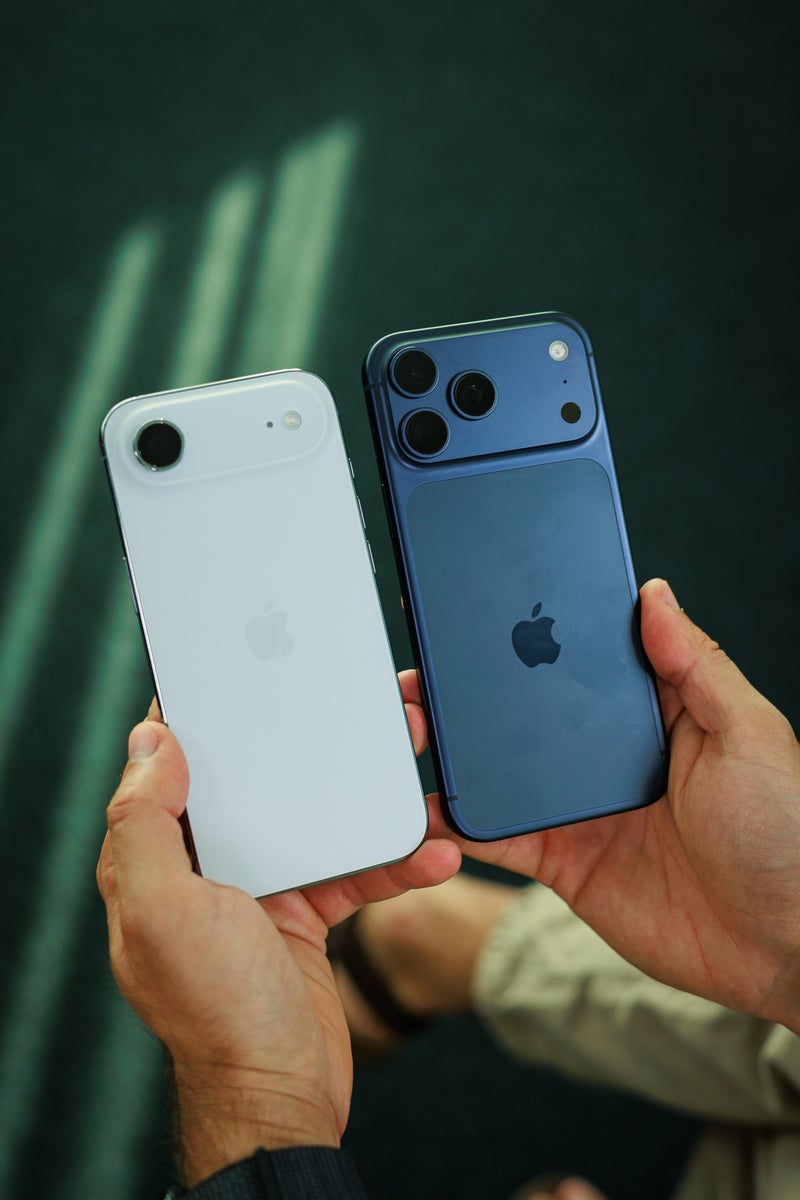
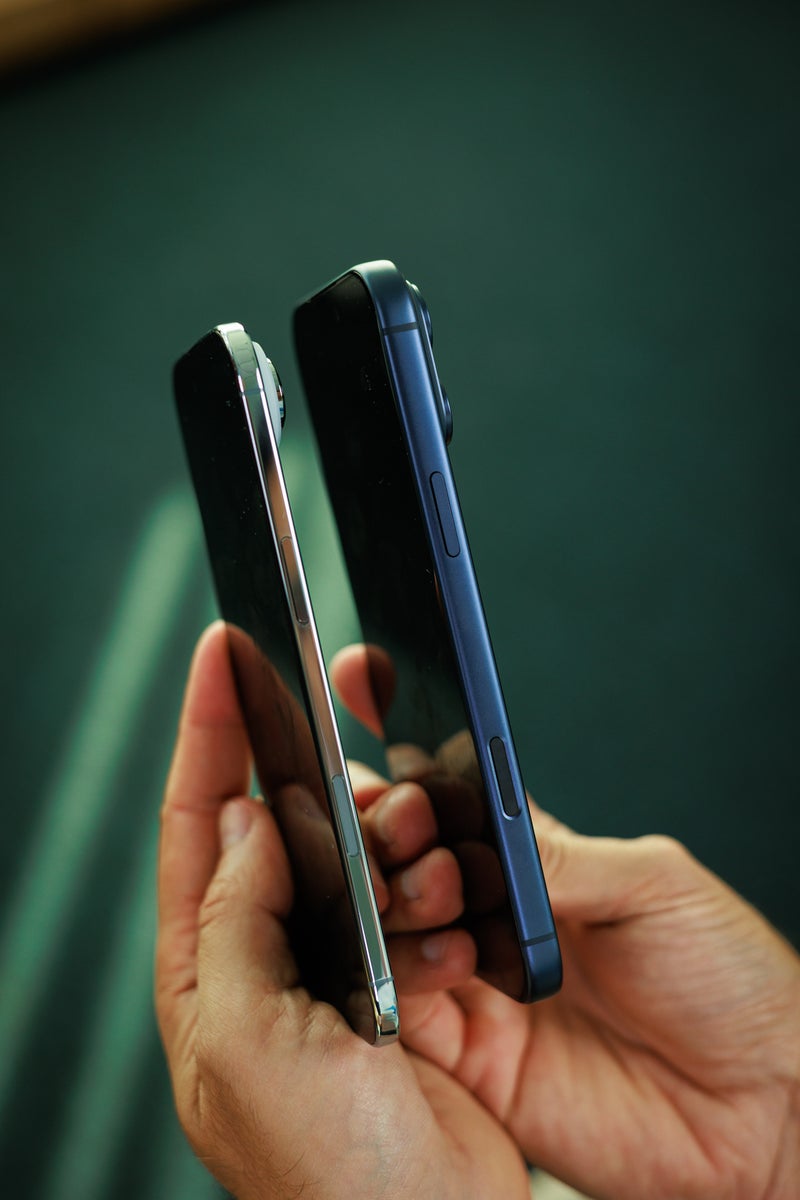
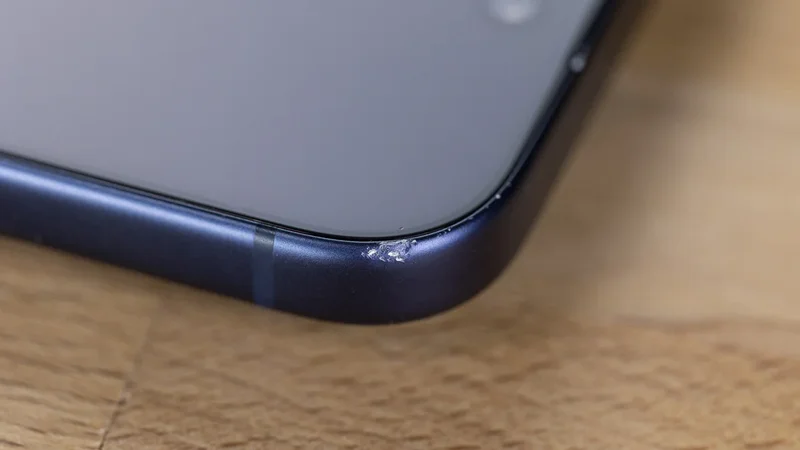
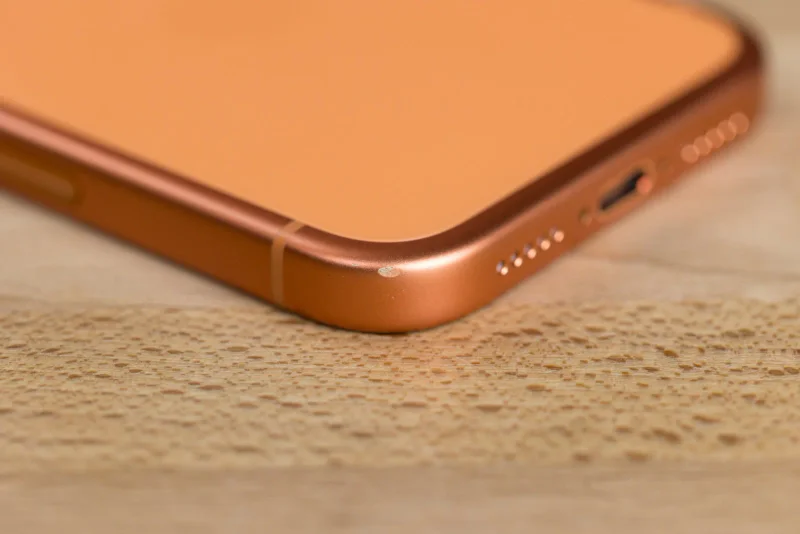
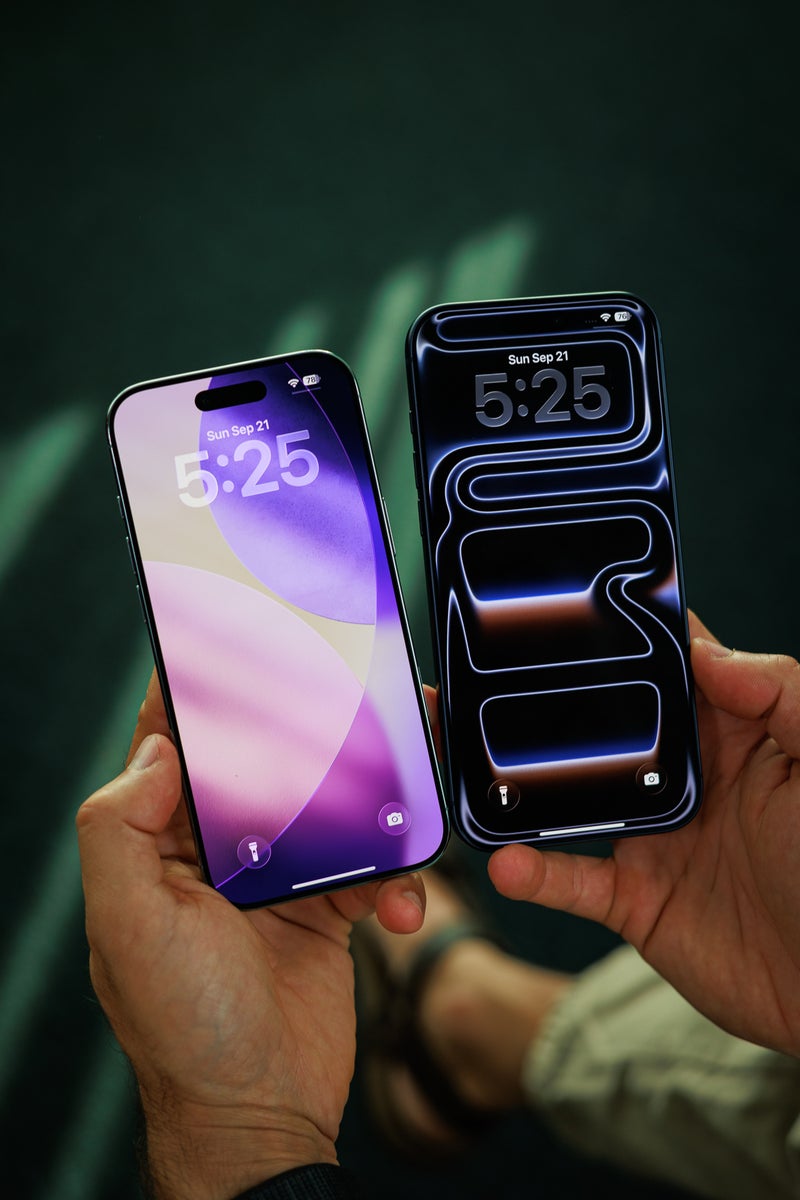
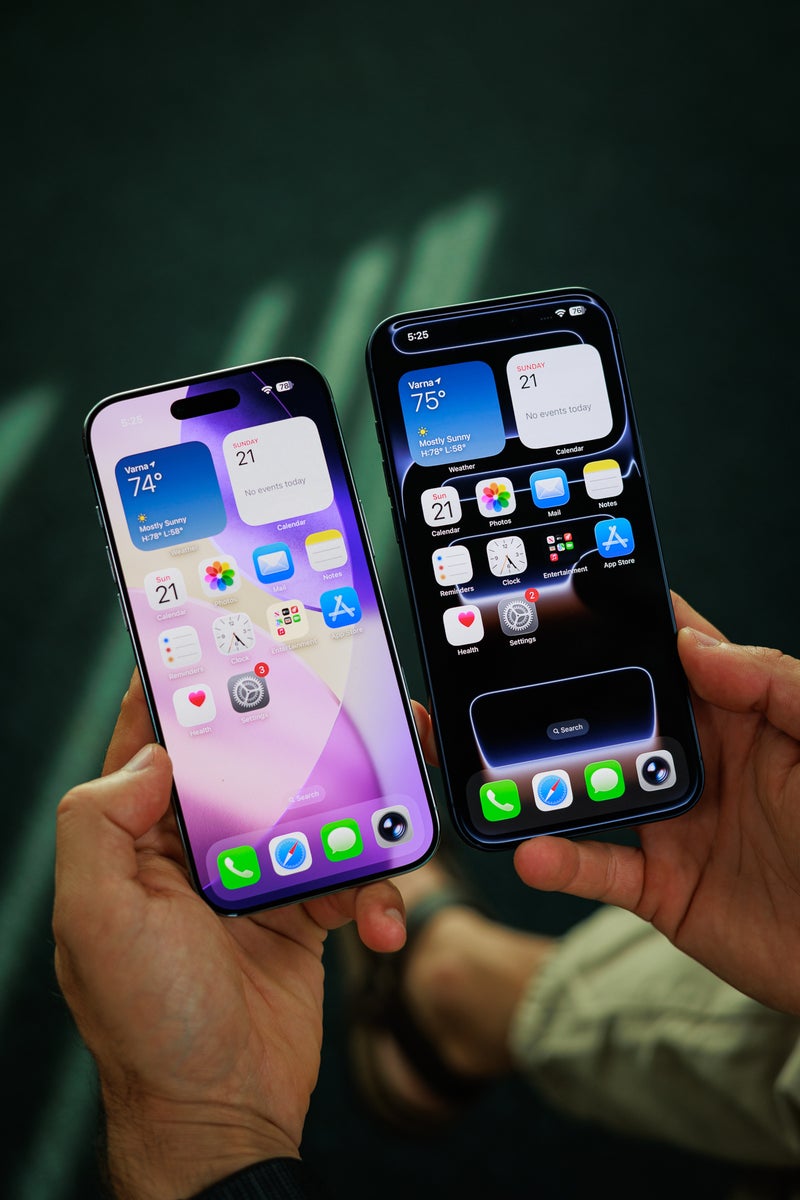
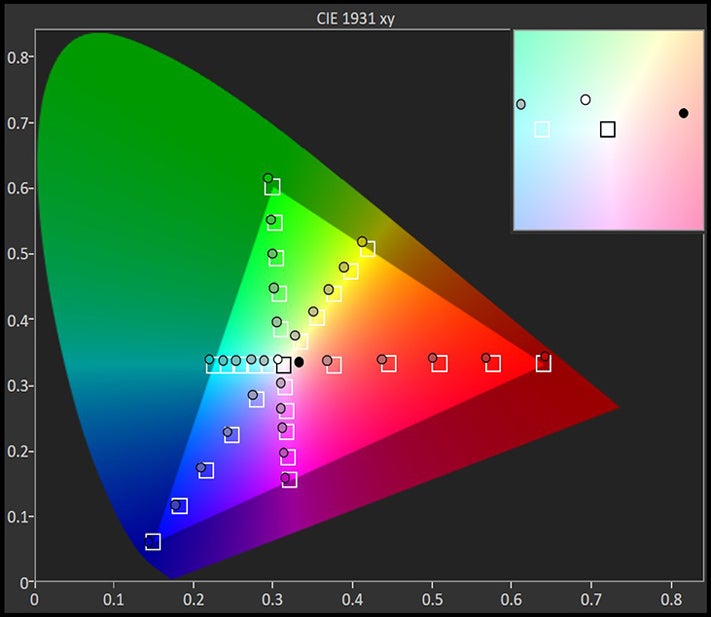





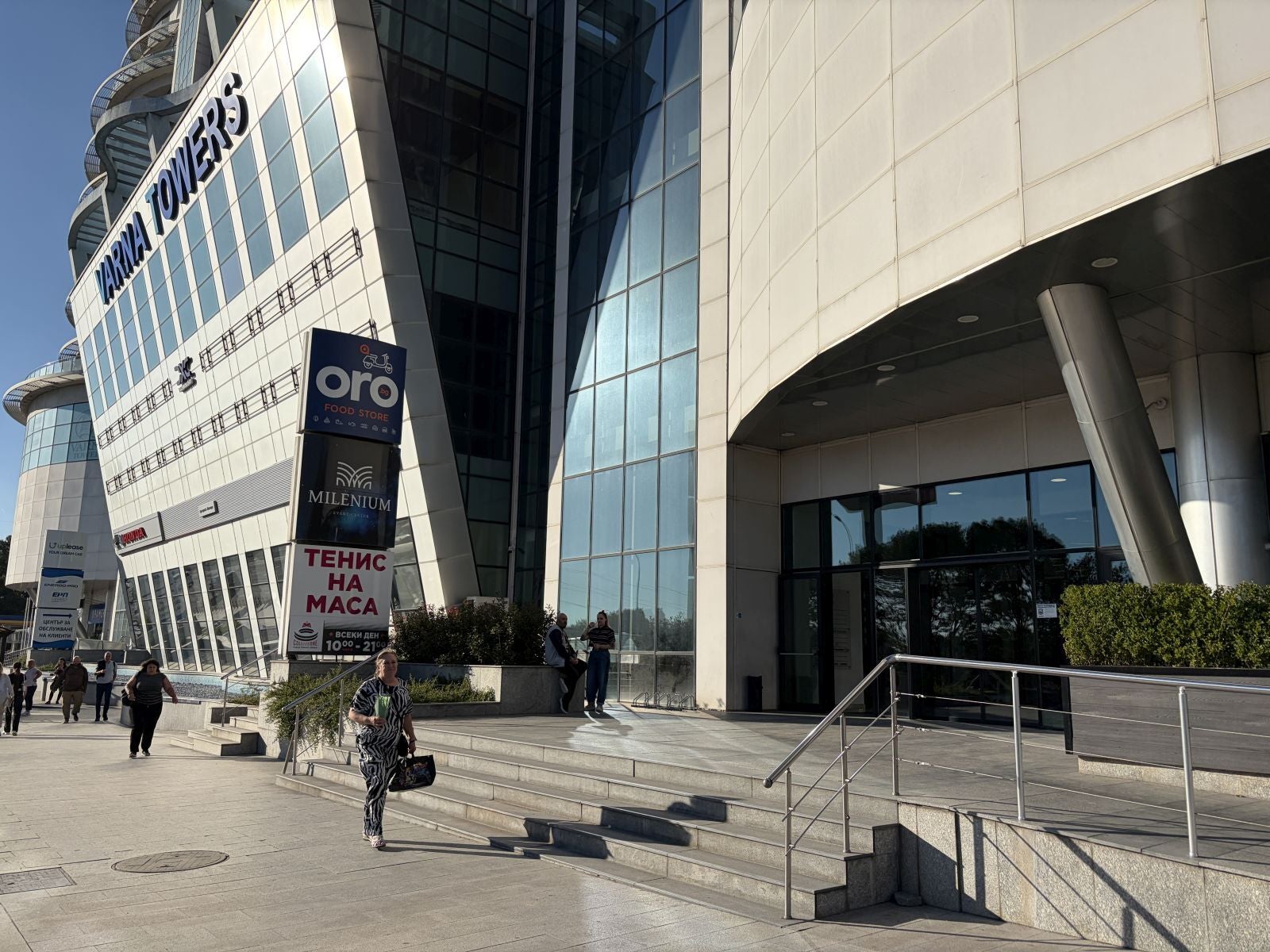
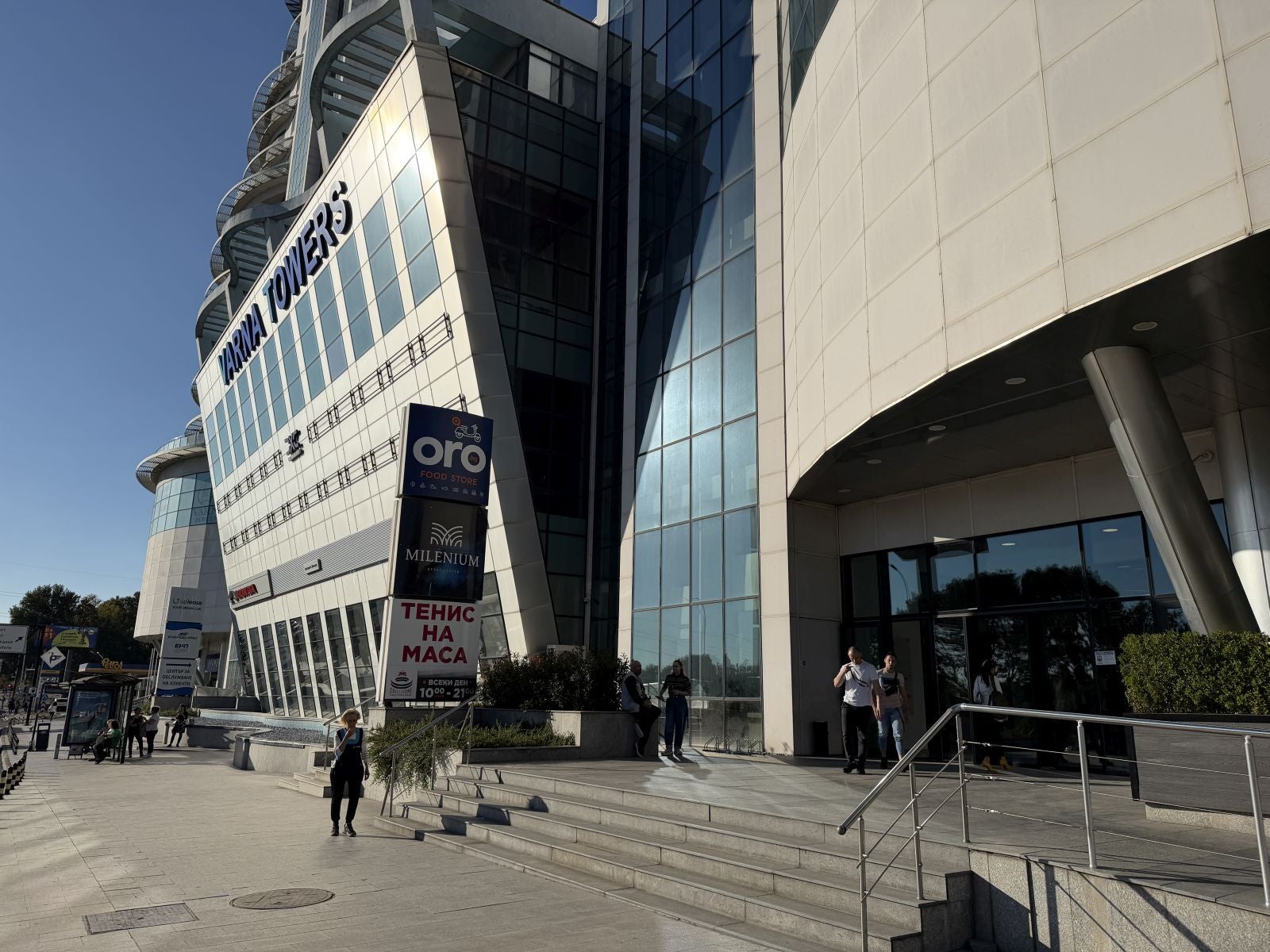





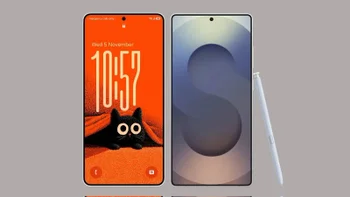

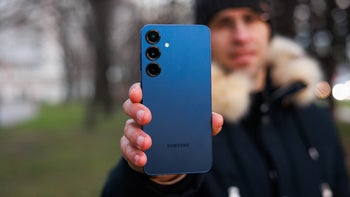
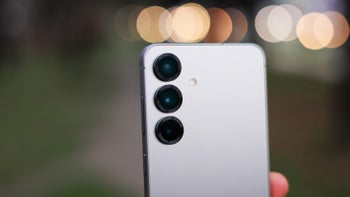
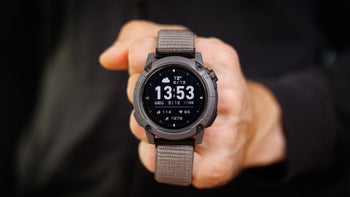
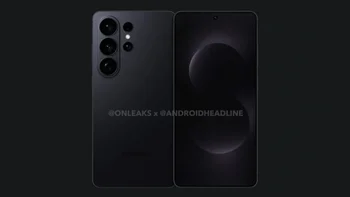
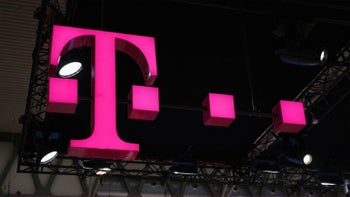

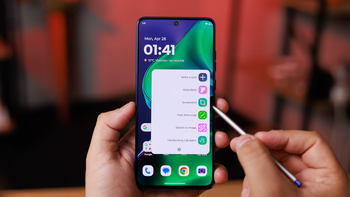
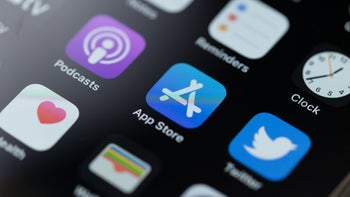

Things that are NOT allowed:
To help keep our community safe and free from spam, we apply temporary limits to newly created accounts: